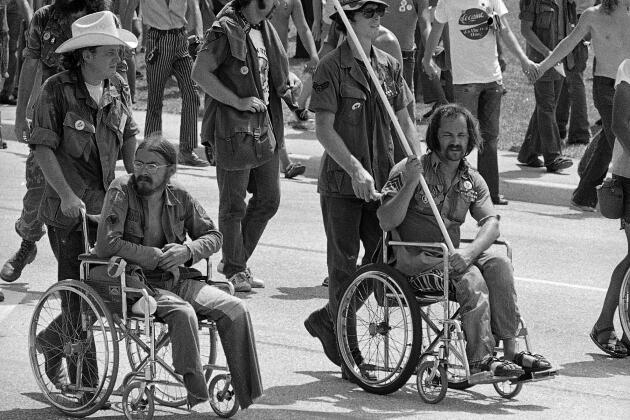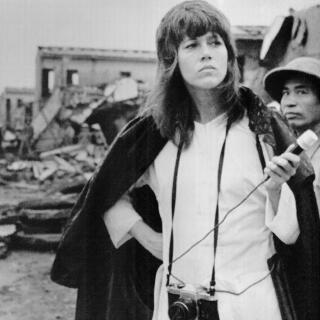In late December 1967, while Jane Fonda was resting in Mégève (Southeastern France) after shooting Barbarella, Ron Kovic was in the middle of the jungle in the demilitarized zone between North and South Vietnam. This was his second tour. The young Marine enlisted in 1964, right out of high school in Massapequa, New York. He was proud to follow in his parents' footsteps. "They met in the Navy. They both volunteered after the attack on Pearl Harbor in 1941," he said. And Ron Kovic was born on the 4th of July, America's independence day. Patriotism was in his DNA.
On his first deployment, the GI received the rank of sergeant and a medal celebrating his 22 reconnaissance missions in enemy territory. Upon his return to the United States, he was surprised to find the atmosphere had drastically changed in President Lyndon Johnson's America. Protesters were marching against the war, insulting the military and defying the government. Kovic insisted on going back to the front. "I wanted to show the hippies what patriotism was all about," said the former Marine, in his wheelchair. "To prove that the war was winnable."
This time, the war would have the upper hand. On January 20, 1968, while on a mission, Sergeant Kovic was shot in the heel. "I got up and walked away with my rifle. I still wanted to be a hero." With the second round, he felt as if he had been hit by an "express train." "From the waist down, everything shut down." Sergeant Kovic was rescued by a comrade and then transferred from one crowded military hospital to another until he finally reached a convalescent center where he struggled, with his crutches, unable to admit that he would never walk again.

Half a century has passed. On this breezy spring day at Old Tony's Restaurant in Redondo Beach, California, 76-year-old Kovic is quietly recounting his life over his favorite dish, scallops, which his partner, Terri Ann Ferren, is helping him pick off the plate. It's not the life he dreamed of, but he survived and found his calling, while so many friends who suffered the same injuries committed suicide. As soon as he was released from the hospital, Kovic became a spokesman for the soldiers against the war. He railed against the Veterans Administration and the rat-infested hospitals in which they put maimed heroes.
'I gained a conscience'
Kovic wrote a memoir, met Régis Debray, dined with Norman Mailer, inspired Bruce Springsteen and gave his Purple Heart medal to Tom Cruise, who portrayed him in Oliver Stone's Born on the Fourth of July (1989). And, of course, he remained Fonda's friend after they met on a stage at Claremont University, near Los Angeles. That day, he spoke before her. "I may have lost my body. But I have gained a conscience!" he told the protestors. Hearing him, the actress promised herself that she would make a film about these young soldiers who America had failed. They came from the working class, from rural America, and were sons of families who had neither the money nor the connections to escape Vietnam. It took her six years to make it out.
You have 84.73% of this article left to read. The rest is for subscribers only.
